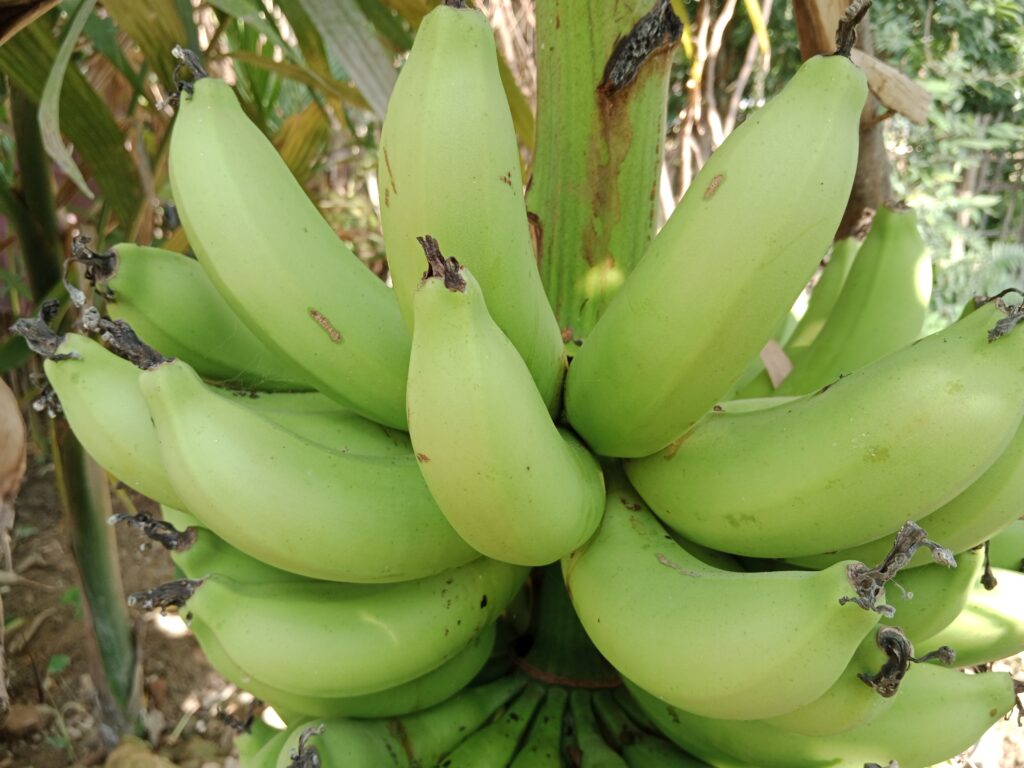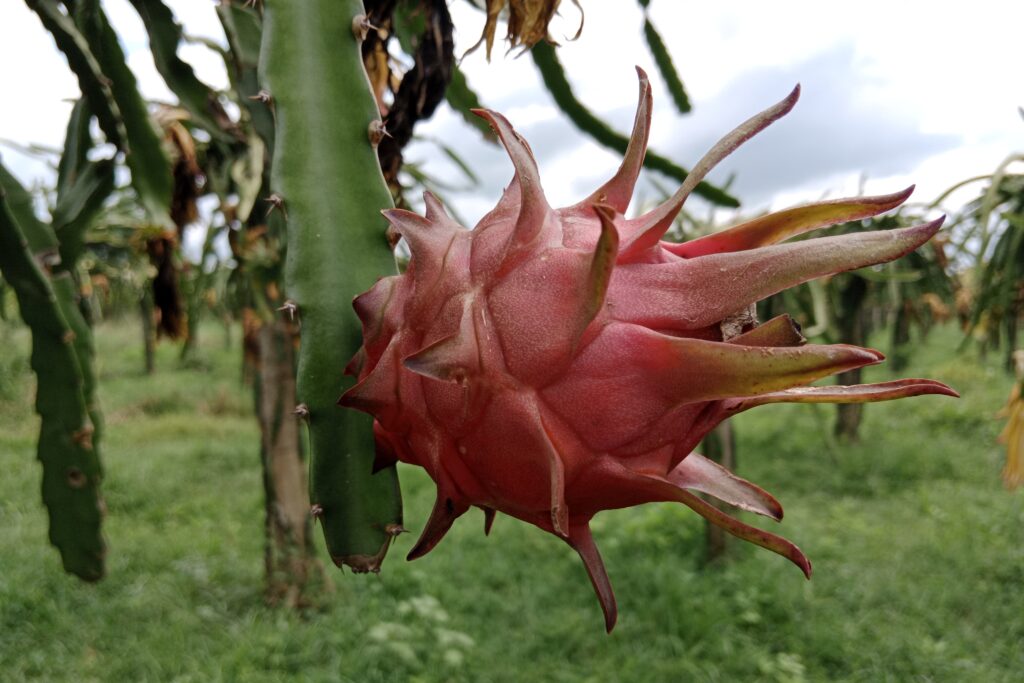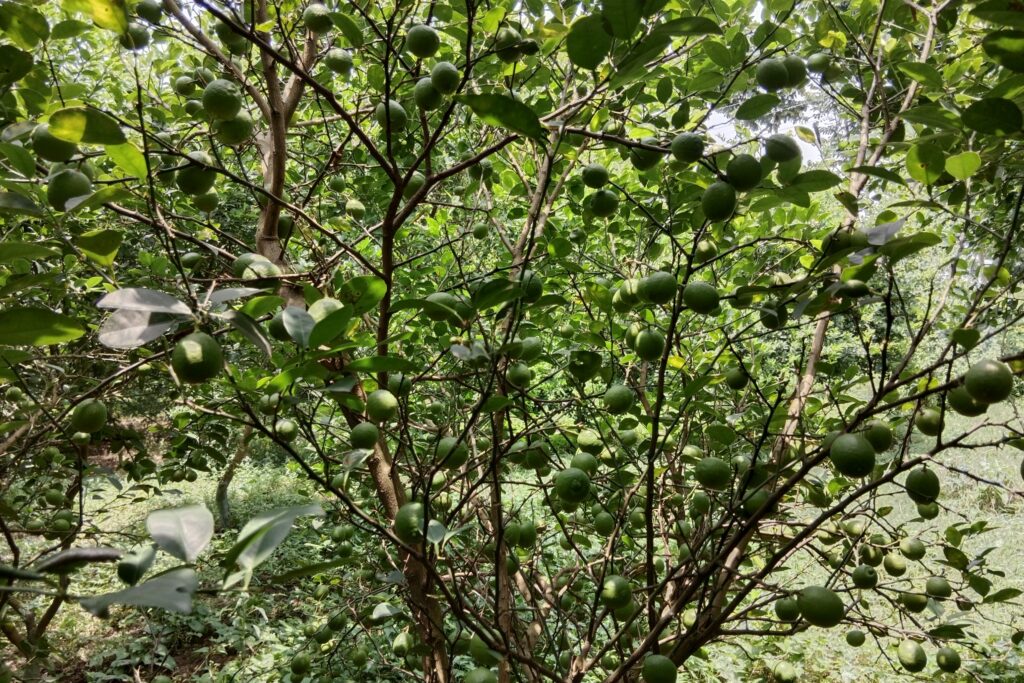Banana Farming Fertilizer Schedule
Banana cultivation plays a crucial role in global agriculture, providing a highly nutritious fruit that is rich in essential vitamins, minerals, and dietary fiber. As a fast-growing and high-yielding crop, banana plants require a well-balanced supply of nutrients, water, and proper field management to achieve optimal growth and maximum productivity. The ultimate banana fertilizer schedule in this guide help growers to boost their banana farming and achieve optimal growth. The right fertilization strategy not only enhances fruit quality and yield but also improves soil fertility and long-term sustainability.

Banana farming is widely practiced in tropical and subtropical regions, where the crop’s economic significance extends to both small-scale farmers and large commercial plantations. Given the plant’s intensive nutrient demands, an effective fertilization schedule is essential to support root development, leaf expansion, flowering, and fruit formation.
This comprehensive guide provides a step-by-step fertilization plan, covering the nutrient requirements at different growth stages, best fertilizer types, application methods, and sustainable soil management practices. By following this schedule, banana growers can ensure healthy plant growth, improved resistance to pests and diseases, and higher marketable yields, all while preserving soil health and minimizing environmental impact.
Why Fertilization is Important in Banana Farming
Banana trees are highly responsive to nutrient availability, thriving best in warm climates with well-distributed rainfall and well-drained, fertile soil. Since bananas are heavy feeders, they require a consistent and balanced supply of essential nutrients to sustain their rapid growth, strong root system, and high fruit production. Soil fertility is the foundation of a successful banana plantation, and fertilizers play a crucial role in replenishing the nutrients lost due to plant uptake, leaching, and soil degradation.
Also Read About: Best Banana Fertilizers
Proper fertilization provides several key benefits
Enhanced Plant Growth and Development
Nutrients such as nitrogen (N), phosphorus (P), and potassium (K) are essential for leaf expansion, root strengthening, and the overall vigor of the banana plant.
Increased Fruit Yield and Quality
Adequate fertilization ensures larger bunches, uniform fruit size, and improved flavor, making bananas more marketable and profitable for farmers.
Improved Resistance to Pests and Diseases
A well-nourished plant is less susceptible to common banana diseases such as Panama disease, Black Sigatoka, and Fusarium wilt, and is more resilient against environmental stressors.
However, improper fertilizer applications such as overuse, underuse, or incorrect timing—can lead to nutrient imbalances, soil degradation, and environmental pollution, affecting both farm productivity and ecological sustainability. To prevent these issues, farmers should adopt good agricultural practices, including:
- Selecting the right type of fertilizers (organic or inorganic) based on soil test results.
- Applying fertilizers at the correct growth stage to meet the plant’s nutritional needs.
- Using efficient methods such as fertigation or band placement to ensure optimal nutrient uptake.
- Maintaining proper application rates to avoid excessive nutrient runoff, which can contribute to water pollution.
By implementing a well-planned fertilizer management strategy, farmers can maximize banana yield and quality, preserve soil health, and reduce negative environmental impacts, ensuring long-term sustainability and profitability in banana farming.
Key Nutrients for Banana Plants
Banana plants require a balanced supply of macro and micronutrients to achieve vigorous growth, optimal fruit production, and resistance to diseases. The application of organic amendments, biofertilizers, and chemical nutrients plays a crucial role in enhancing soil fertility, improving nutrient availability, and supporting overall plant health.
Organic Fertilizers and Soil Conditioners
Farmyard Manure (FYM)
A rich source of organic matter that improves soil structure, water retention, and microbial activity, ensuring a steady release of nutrients.
Neem Cake
Acts as a natural fertilizer and pest repellent, enhancing soil fertility while protecting the roots from nematodes and soil-borne pathogens.
Biofertilizers
These include beneficial microorganisms that improve nutrient availability and uptake, promoting sustainable banana cultivation. Key biofertilizers for banana plants include:
- Azospirillum: A nitrogen-fixing bacterium that enhances plant vigor by supplying atmospheric nitrogen to the soil.
- Phosphorus Solubilizing Bacteria (PSB): Converts insoluble phosphorus into available forms, ensuring efficient uptake for root and flower development.
- Potash Mobilizing Bacteria (KMB): Helps release potassium from soil minerals, supporting fruit quality, size, and disease resistance.
Essential Chemical Nutrients
Banana plants rely on three primary macronutrients for proper growth and productivity:
Nitrogen (N)
- Essential for leaf and stem development, ensuring lush green foliage and strong vegetative growth.
- Plays a critical role in photosynthesis and protein synthesis, which directly impacts plant vigor and productivity.
Phosphorus (P)
- Supports root development, flowering, and fruit initiation by aiding in energy transfer and cell division.
- It is crucial during the early growth stages to establish a strong root system that can support the plant’s high nutrient demands.
Potassium (K)
- Regulates water balance, enzyme activation, and nutrient transport, making it the most vital nutrient for banana plants.
- Enhances fruit size, taste, and texture, improving marketability and overall yield.
- Increases resistance to pests and diseases, protecting plants from common threats like Sigatoka leaf spot, Panama disease, and Fusarium wilt.
Among these, potassium is the most crucial element in banana nutrition, as both the leaves and fruits have a high potassium demand. A deficiency in potassium can lead to poor fruit development, weak stems, and increased susceptibility to diseases. Therefore, maintaining an optimal nutrient balance through a combination of organic amendments, biofertilizers, and targeted chemical fertilizers is essential for ensuring high-quality banana production and long-term soil health.
Banana Fertilizer Schedule
Pre-Planting Preparation
Before planting, prepare the soil to ensure it is rich in organic matter and beneficial microorganisms.
- Add 5–10 kg of Farmyard Manure (FYM) and 2 kg of neem cake per pit.
- Inoculate the soil with Azospirillum, Phosphorus Solubilizing Bacteria (PSB), and Potash Mobilizing Bacteria to enhance nutrient availability and improve plant growth. Apply 50 grams of each biofertilizer per planting pit for optimal soil enrichment and root development.
At Planting
Apply the following fertilizers at the time of planting:
Nitrogen (N): 120 g per pit.
Phosphorus (P): 60 g per pit.
Potash (K): 300 g per pit.
Mix the fertilizers thoroughly with the soil in the planting pit to ensure proper nutrient distribution.
3 Months After Planting
At this stage, the banana plant enters its vegetative growth phase. Apply:
Nitrogen (N): 100 g per plant.
Phosphorus (P): 50 g per plant.
Potash (K): 200 g per plant.
6 Months After Planting
Continue supporting the plant’s growth with the following application:
Nitrogen (N): 100 g per plant.
Phosphorus (P): 50 g per plant.
Potash (K): 200 g per plant.
9 Months After Planting
As the plant matures, maintain nutrient levels with:
Nitrogen (N): 100 g per plant.
Phosphorus (P): 50 g per plant.
Potash (K): 200 g per plant.
Flowering Stage
The flowering stage is a crucial phase in banana farming, as it directly impacts fruit set and overall yield. During this period, banana plants require an increased supply of phosphorus, which plays a vital role in flower formation, fruit initiation, and root strengthening. A deficiency in phosphorus at this stage can lead to poor fruit development and reduced productivity. To meet this requirement, farmers should apply a high-phosphorus fertilizer such as NPK 0:52:34, which provides readily available phosphorus to support flowering and early fruit formation. Foliar spraying ensures rapid nutrient absorption, promoting healthy blooms and strong fruit clusters.
Fruit Development Stage
Once flowering is complete and fruit formation begins, the nutrient demand of banana plants shifts towards potassium. Potassium is essential for enhancing fruit size, weight, and quality while also improving resistance to diseases and environmental stress. A deficiency in potassium can lead to poor fruit filling, uneven ripening, and reduced shelf life. To optimize fruit growth, farmers should apply high-potash fertilizer such as NPK 0:0:50 through foliar spraying. This ensures efficient nutrient uptake, leading to well-developed, flavorful, and market-ready bananas.
Fertigation for Efficient Nutrient Delivery
Fertigation is an advanced method of applying water-soluble fertilizers through irrigation systems. This ensures precise nutrient delivery and reduces wastage. Commonly used fertilizers for fertigation include:
- Urea (46:0:0) for nitrogen.
- Urea Phosphate (17:44:0) for phosphorus.
- Muriate of Potash (MOP) (0:0:60) for potassium.
Tips for Effective Fertilizer Management
- Soil Testing: Conduct regular soil tests to determine nutrient deficiencies and adjust fertilizer applications accordingly.
- Split Applications: Divide fertilizer doses into multiple applications to prevent nutrient loss and ensure steady uptake.
- Mulching: Use organic mulch to retain soil moisture and improve nutrient availability.
- Water Management: Ensure adequate irrigation after each fertilizer application to help nutrients dissolve and reach the root zone.
Conclusion
A well-planned fertilizer schedule is essential for successful banana farming. By following the recommended fertilization practices, farmers can ensure healthy plant growth, high fruit yield, and sustainable farming practices. Remember, the key to success lies in selecting the right fertilizers, applying them at the right time, and monitoring plant health regularly.


